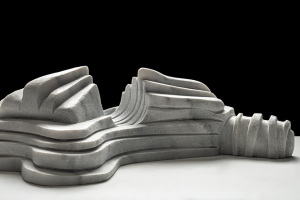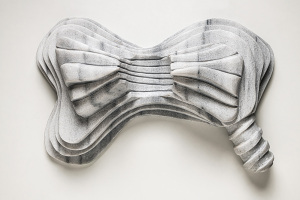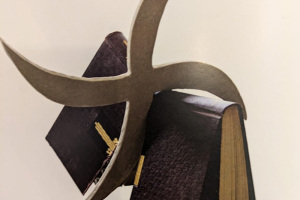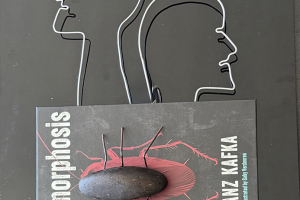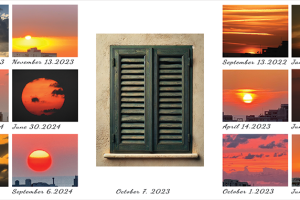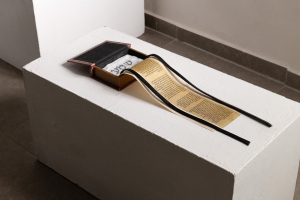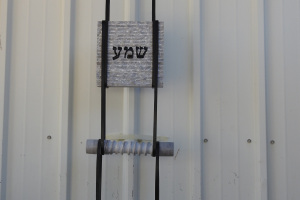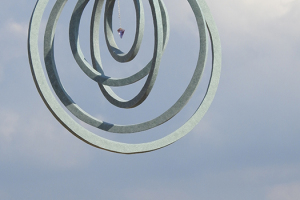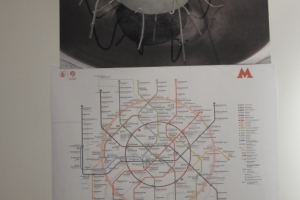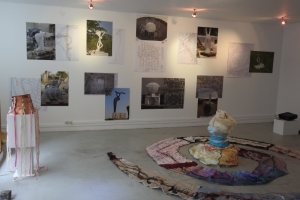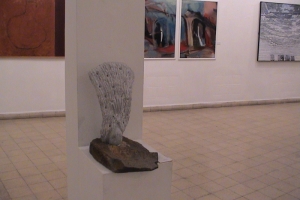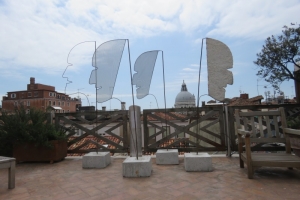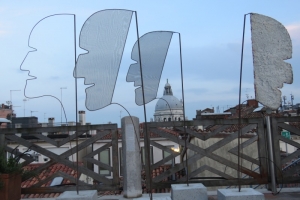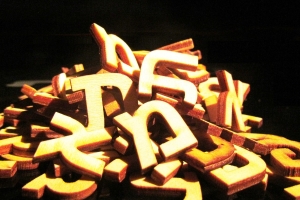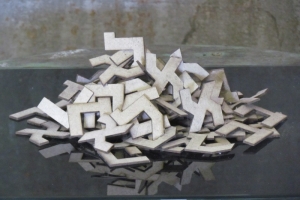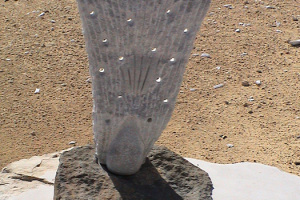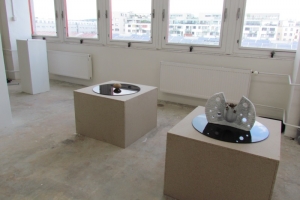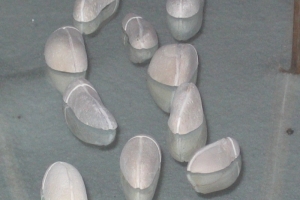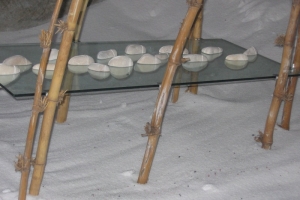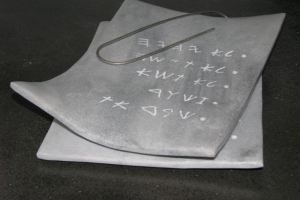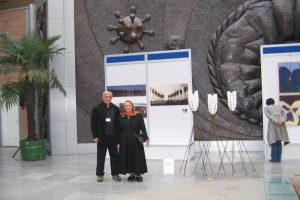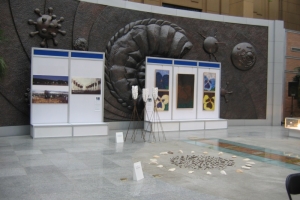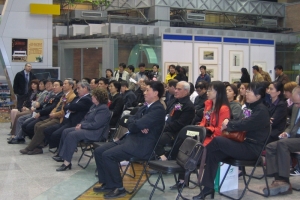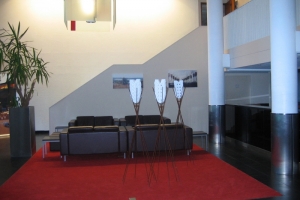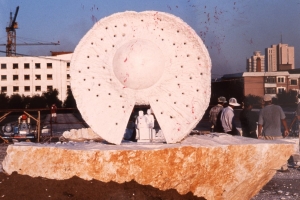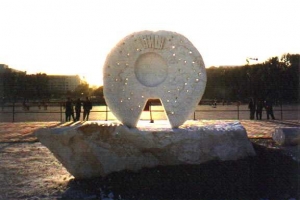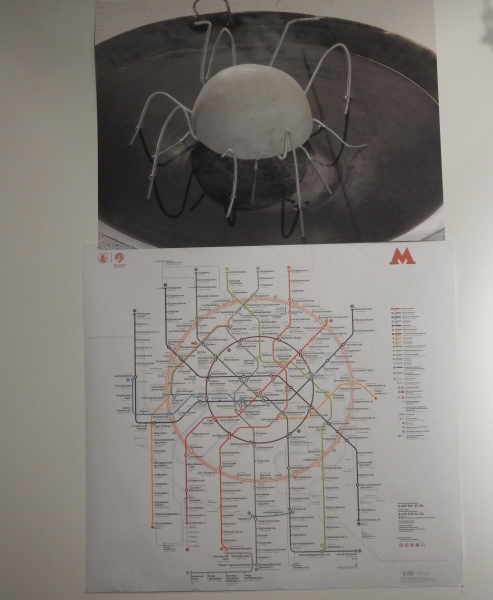Languages of Environment, Paris 2019
Avi Sperber Sculpts the Environment
Avi Sperber is an Israeli stone sculptor active internationally. In his professional life he is a transportation engineer who designs roads.
The concept of “mapping” in Avi Sperber’s dual role as engineer and artist acquires a special meaning both in his treatment of the physical environment in which he works and in the use of the massive natural materials in his sculptures.
In the introduction to his exhibition “Direction West”, which was shown a decade ago at the prestigious Stern Gallery in Tel Aviv, I wrote that “there is a special meaning to the location of Sperber’s sculptures in the public space. Avi Sperber, who is a transportation engineer, is well aware of the function of the place and the substance of the space in which we move and work”. The subjects of space have changed unrecognizably in the third millennium. The reading of space has changed – as part of the reading of physical and virtual reality which has become more complex and now contains multiple connective and dimensional spaces. According to the philosopher Michel Foucault, “Western thought has changed from organization along an axis of time to organization along an axis of space. The axis of time is important in constructing reality, but we live in the age of simultaneity, in a world with less of a full life developing over time and more in a network connecting nodes and crossing its threads”. This gives a particular emphasis to Avi Sperber’s earthly, physical work, to his artistic insistence on dealing with the “visible” and “corporeal”, in stone that can be touched, but at the same time in the greater meaning of stone as groundbreaking, in the natural material, which symbolizes eternity and a transition to that which is beyond time.
The current exhibition in Paris is about the translation of spatial mapping. Two-dimensional drawings of urban intersections that Avi Sperber worked on as an engineer, or maps of famous sites in the world’s major intersections, have been turned into three-dimensional stone sculptures, thus creating a new language. The formal road drawings that appear in every cellphone in the age of digitization, Waze and GPS, were an inspiration to Avi Sperber and have become hieroglyphs of a new language describing our time.
All the sculptures are made of natural stone, from which Avi Sperber skillfully removes the unneeded parts. The exhibition shows symbolic stone sculptures which showcase the artist’s skill, as well as photos of the actual sculptures and a series of map drawings which inspired the artists.
Doron Pollak / Curator
Metamorphosis
In his books and stories, the writer Franz Kafka discusses the existential condition of man and presents questions related to an individual’s relations with himself and society. He asks the individual’s question, “Who am I?” and “What is my attitude toward the society of people around me?” On the other hand, he laments society’s humiliating and aloof attitude toward the lone individual and weak groups within society.
Kafka conveys his thoughts through fantastical and supernatural stories. Many of his stories include an animal as a metaphor for a lonely, humiliated, and alienated person. A well-known example is his book The Metamorphosis, which portrays an insurance agent who lives a dull life occupied with family and routine work until one day, he turns into an insect. This incident forces him and those around him to reexamine their relationships with themselves and with society in this new situation. The Metamorphosis is a metaphor depicting the tragedy of a person who has ceased to fulfill his role in society and, from society’s perspective, has become an insect to be eliminated. The neutral, dry writing style brings into relief the nightmare of existence in a world devoid of values and humanity – a life of humiliation and loneliness.
The work “Metamorphosis” echoes Kafka’s thoughts and spirit in a three-dimensional creation made of paper (book), iron, stone, and plexiglass. The work consists of Kafka’s book The Metamorphosis, which is displayed in conjunction with a human figure made of iron wires that create transparency and emptiness within the outline, insects made of stone with iron wires, and a black plexiglass sheet.
The juxtaposition of the book and the figure combines literature and real life as an expression of the transition from Franz Kafka’s inner world to the inner awareness of the reader The materials iron and stone emphasize the transition from the spiritual to the material. (One must remember that Kafka lived during the era of the Industrial Revolution in Europe.) Metal, as a cold industrial material, depicts the cold relationship between man and his environment while the black stone represents a sense of weight and horror, and the black plexiglass reflects reality.
The transparent figures express indifference, emptiness, distance, alienation, and the absence of any emotional presence.
Kafka, creator of absurdist stories, left all his writings, notes, and diaries to his friend Max Brod and ordered him to burn them all when he died. By breaking this pledge and publishing them, Brod would make Franz Kafka one of the most important writers in our culture. The price tag on the back of the book highlights the touch of the absurd in his writings as well as in his life and death.
The work presented attempts to express the interconnections of alienation, disintegration of identity, loneliness, and the detachment of man and society then and now, all central themes in Franz Kafka’s work.
Avi Sperber
